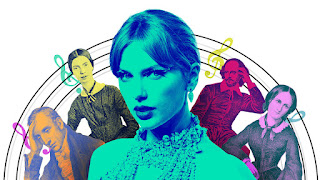Aishwarya Week 4: The Language of Birds Speaks on Identity

Photo by Freepik.
I was in my backyard glancing through the window at the birds that were perched across the power line. I decided to listen carefully to the sound of two birds chirping at each other as if they were communicating like humans having a conversation. Every minute, another bird came by and stood on the power line beside the other birds. After about 2 minutes, there were ten birds sitting on either of the two power lines with their heads turned towards each other and their wings by their side.
When I carefully listened to the sounds the birds made, I noticed that the row of five birds had sounded like whistling notes and screeching sounds of hawks. On the other hand, the row of birds below them sounded more like the buzzing and trilling sounds of wings that flap in the air. This made me wonder, how do the birds have different sounds when they are all of the same kind?
The intriguing clue that gave it away was that the five birds on the power line were blue jays while the other five birds were House sparrows. I realized that the birds of different species have their own language passed culturally over generations. Similarly, humans with different backgrounds speak languages that shape their cultural identity. Each family you encounter in a neighborhood speaks in a way that shapes who they are.
Every bird you see either flying across the sky or resting near a tree speaks in a unique way that signifies the species they are a part of. Each row of the five birds expresses their communicating values through the language they convey. The way the birds chirp to the way they tilt their head classifies them as having a certain identity in the biological world.
The nature that surrounds us to the people we are and see, communicates in a certain way that builds an identity. When you speak to another person in an energetic way, other people may perceive you as a joyous person. When a bird has a blue color above and a white color below its body with a bold black necklace, humans perceive it to be a blue jay. When a bird speaks in a high-pitched tone that creates a chorus of soothing music, people perceive it to be a songbird. The personality of a human to the language of a bird are a few of the amazing aspects of identity.


Hi Aishwarya! I really like how you decided to write about observations that you made rather than searching for topics to write about online. Your observation of the bird calls as a language was very interesting to me as I usually just think of them as noises they make when they need to communicate. I never thought of it as a “language passed culturally over generations” so your blog was a very interesting perspective! I also like how you compared the birds to humans to show the similarities the two species have despite being so different. The extra detail of appearances affects perceptions as well (the mention of a person observing a blue jay based on their physical appearance). If birds have depth and culture, this makes me wonder if all animals have some degree of culture as well! Overall, your blog was a very interesting read; I like how it felt sort of like a journal entry recounting the things you witnessed.
ReplyDeleteHi Aishwarya! Your attention to detail is impressive and minute, especially considering the way you build intricate connections between observations that you have made on birds to broadly encompass human societal tradition. I am intrigued by your attention to detail concerning the birds’ species and willingness to research the species to make generalizations about human society. Your image seems appropriate for the subject of discussion; you differentiate the species of birds that are present to portray a clear connection between identity and tradition. I understand the connection that you create between traditions that have been passed on for generations and the individualistic identity that humans possess. You provide the species of birds with the importance they deserve, contrasting with humans who consider themselves as superior to all other species. Your use of extended sentence structure allows you to discuss more thoughts at a time and then allocate time for reflection. The use of striking language packed into longer sentences delivers the impression that all aspects of nature can communicate, effectively proving the importance of language, regardless of whether it is a human language or the language of any species.
ReplyDeleteThis comment has been removed by the author.
ReplyDeleteHi Aishwarya! I thought your blog was extremely intriguing, and your attention to detail is truly fascinating. The descriptions you gave about the 5 birds sitting on the power line were so vivid and clear that it almost felt like I could see them as well! I felt that your connection between the birds and how they relate to how people communicate was really well done. I completely understood the point you were making, especially how communication plays a big role in our identities. We tend to make judgments based on our first impressions of people, and these judgments typically come from the way a person communicates with us, similar to the example you gave regarding how people perceive each other. Additionally, I think that giving an example of birds was really unique, as one would not normally compare birds to humans. Overall, I thought that your blog was well written with descriptive terms and vivid imagery. It was effective in portraying your idea regarding how communication helps build our identity. Good job!
ReplyDelete